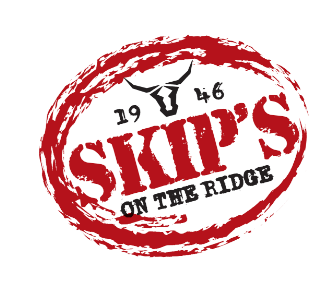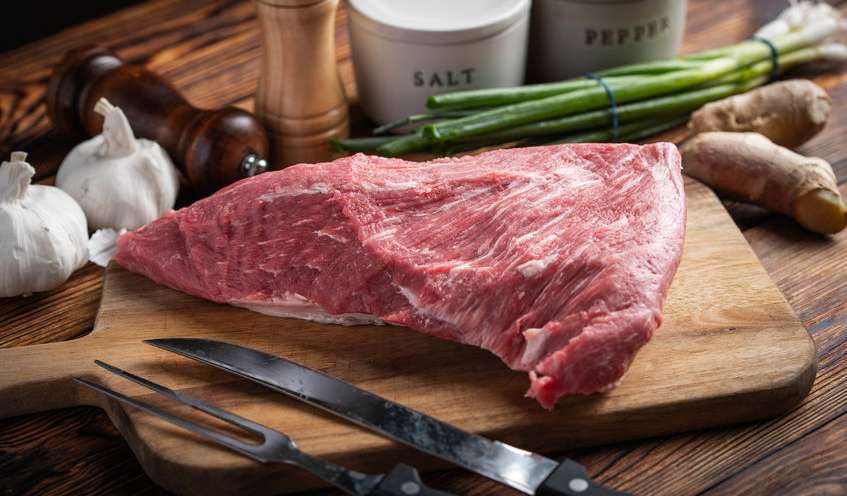The tri-tip is a triangular shaped cut from the bottom sirloin. It is surrounded by the remainder of the sirloin and the round and flank primal. It’s boneless, fairly tender and has become popular for its rich, beefy flavor. Often, a tri-tip is known as the triangle roast.
Tri-tip meat should be nicely marbled even though it is considered a lean, tender cut. The fat should not be trimmed until after cooking because it helps to seal in the moisture, keeping the meat tender. A boneless tri-tip roast generally weighs about two pounds (which yields approximately eight servings).
If you don’t see it in the meat case, it’s definitely worth asking the butcher to order in a tri-tip roast!
Popular ways to cook a tri-tip roast…
A tri-tip can be either oven roasted or grilled. Roasting it on high heat will brown it nicely while keeping the center moist and pink. The tri-tip is excellent when cut into steaks or cubed for kabobs and barbequed. However, it can easily become very tough if cooked improperly. A tri-tip must be grilled in indirect heat.
Because the cut contains so little fat, we recommend not cooking past an internal temperature 150°F (medium) degree of doneness.
Seasoning a tri-tip roast…
For added flavor, consider a tri-tip rub. Sprinkle meat with rub and massage lightly all over. You can also just season the meat with salt, ground black pepper and a bit of garlic before cooking.
Cover and refrigerate the seasoned roast for at least one hour or up to 24 hours to allow the flavors to penetrate the meat more deeply. Remove from refrigerator one hour before cooking.
Cutting a tri-tip roast…
The trick is to slice it against the grain. This cut contains two different grain directions that can easily be seen when the meat is raw. Before you rub it, take a look to see which direction the long strands of muscle fiber are running on each part of the roast. After the roast has been cooked and rested, you’ll want to slice the roast in two at the place where the fibers change direction. One side should be longer than the other. Slice against the grain on one side. Then, turn the roast and slice against the grain on the other side. Incorrectly slicing a tri-tip cut can make it tough and chewy. Carve each piece separately.

